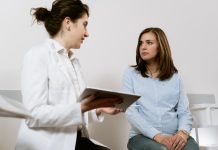It’s no secret that breast cancer is one of the most common types of cancer in women. In fact, according to the American Cancer Society, about one in eight women in the United States will develop invasive breast cancer over the course of their lifetime. While there are many risk factors for this disease – including family history, age, and lifestyle choices – there are also some medical procedures that can help prevent breast cancer or catch it early. Here are four of them:
Table of Contents
1. What are the four medical procedures that we should understand better when it comes to breast cancer prevention and detection?
To answer this question, we must first understand what breast cancer is. Breast cancer is a type of cancer that forms in the cells of the breasts. The most common type of breast cancer is ductal carcinoma, which begins in the milk ducts.
There are four main types of medical procedures that can be used to prevent or detect breast cancer:
- Mammograms: A mammogram is an X-ray of the breast. It can be used to detect breast cancer in its early stages when it is most treatable. Mammograms can also help to find tumors that are too small to feel.
- Breast Ultrasound: A breast ultrasound is a test that uses sound waves to create a picture of the inside of the breast. It can be used to help find tumors that are too small to feel or see on a mammogram.
- Breast MRI: A breast MRI is a test that uses magnetic waves and computers to create a detailed picture of the inside of the breast. Breast MRIs are sometimes used to screen women who are at high risk for breast cancer, such as women with a strong family history of the disease.
- Breast Biopsy: A breast biopsy is a test that removes tissue from the breast so it can be checked for cancer. A biopsy is the only way to know for sure if there is cancer in the breast.
While mammograms, breast ultrasounds, and breast MRIs can be used to screen for breast cancer, a biopsy is the only way to diagnose it. If you have any abnormal results on a screening test, your doctor may recommend a biopsy.
Another test worth mentioning is BRCA genetic testing. Moreover, you can read more here about it. But this is a test to see if you have inherited a mutated gene that predisposes you to breast cancer. If you have this gene, your risk of developing breast cancer is much higher than someone who does not have the gene.
2. Why is it important for us to be familiar with these procedures?
As with any cancer, breast cancer is best treated when caught early. These procedures can help to catch breast cancer at an early stage when it is most treatable.
Additionally, these procedures can also help to prevent breast cancer from developing in the first place. For example, regular mammograms can help to detect changes in the breasts that may be early signs of cancer.
By familiarizing ourselves with these procedures, we can be more proactive in our breast cancer prevention efforts.
3. How can we go about learning more about them so that we can make informed decisions about our health care?
If you or a loved one has been diagnosed with breast cancer, it’s important to learn as much as possible about the disease and the available treatment options. The first step is to consult with a physician who specializes in treating breast cancer. He or she can explain the risks and benefits of each treatment option and help you make an informed decision about your care.
In addition to talking with your doctor, you can also learn more about breast cancer prevention by reading reliable sources of information. The National Cancer Institute’s website is a good place to start. The American Cancer Society’s website is another excellent resource for learning about breast cancer and its treatment.
4. Are there any other resources available to us beyond what’s offered by our health care providers when it comes to breast cancer prevention and detection?
There are a few ways we can learn more about these procedures. First, we can ask our health care providers about them. They should be able to give us information on the risks and benefits of each procedure. Additionally, we can do our research online or at the library. There are many reputable sources of information out there that can help us make informed decisions about our health.

It’s important to remember that these procedures are just a few of the many tools we have at our disposal when it comes to preventing breast cancer. We should also be sure to eat a healthy diet, exercise regularly, and get regular screenings. By taking all of these steps, we can give ourselves the best chance possible of avoiding this disease. Thank you for reading and good luck!




